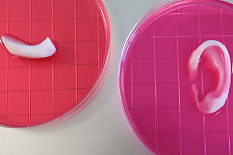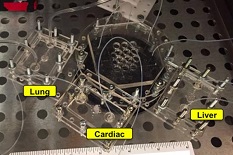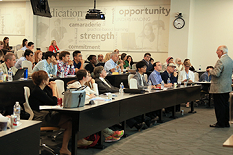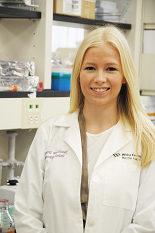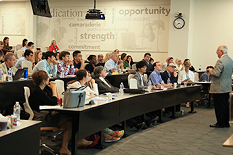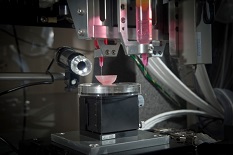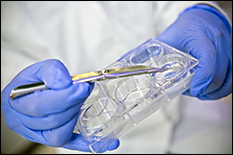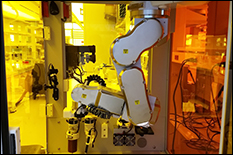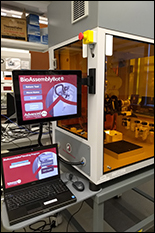News Story
3D bioprinted BioMask could quickly heal facial skin wounds
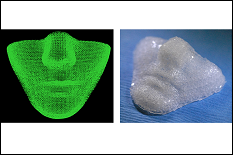
A study out of the Wake Forest Institute for Regenerative Medicine (WFIRM), a Center for Engineering Complex Tissues member, confirmed the efficacy of a 3D printed BioMask for treating facial wounds. Facial burns and wounds present medical trauma experts with serious challenges. The unique arrangement of muscles, tendons, and bones in our faces makes us all look different from one another and that same arrangement is also why it’s impossible to make a one-size-fits-all facial wound solution. This new solution, called BioMask, is incorporated into a dressing and fits tightly and directly onto the facial wound, like a mask. The team has published in the journal Bioprinting proof-of-concept research that uses 3D bioprinting technologies to produce customized, bioengineered skin substitutes.
Traditional treatments for facial wounds include autografts and allografts, essentially transplanting healthy skin from the same person or someone else to where it's needed. These currently available techniques and skin substitutes have several problems, including rejection, infections, and scarring, and grafting is not always an option because it creates a secondary wound that could destabilize patients who are in critical condition. The 3D printed BioMask could be shaped perfectly to a patient’s face and include their own skin cells, which would assist and accelerate the regenerative process.
The team was led by associate professor of regenerative medicine at WFIRM and Center for Engineering Complex Tissues Co-PI Dr. Sang Jin Lee. After generating models from CT (computed tomography) scans, the team 3D bioprinted a mask for a section of a face consisting of three layers: “a porous polyurethane (PU) layer, a keratinocyte-laden hydrogel layer, and a fibroblast-laden hydrogel layer.” Keratinocytes are epidermal cells and fibroblasts are dermal cells, constituents of skin. The team applied this BioMask to a wound on a face-shaped structure on a mouse model. When they examined the results, they found that skin tissue, consisting of both epidermis and dermis layers, had regenerated on the wound. The BioMask was 3D printed on an in-house 3D integrated tissue-organ printing (ITOP) system that is capable of dispensing up to six different cell types and biomaterials. Tests confirmed increased epidermal and dermal cell counts after seven days of BioMask application and wound size was significantly smaller than in the control group after seven and fourteen days.
“The BioMask could have great clinical impact for patients by providing effective and rapid restoration of facial skin following serious burn or injury,” stated Dr. Anthony Atala, CECT PI, director of WFIRM, and a co-author of the paper. “The bioprinting technology, combined with the face CT image, utilized for this concept allows for the fabrication of a personalized shape of a patient’s face so that we can take better care of the wound.”
Our ultimate goal with this research is to make it available to patients in need. While the work is still in the pre-clinical research phase, we are making progress and future studies will hopefully expand on strategies to avoid cosmetic complications with patchy skin loss and discoloration between the bioengineered skin and native skin pigmentation.
Sang Jin Lee, Research Team Leader and Center for Engineering Complex Tissues Co-PI
The paper reports that future studies will investigate the inclusion of melanocytes to avoid cosmetic complications with patchy skin loss and discoloration between the bioengineered skin and native skin pigmentation. 3D printing is truly bringing a new face to facial wound treatments. “For patients who suffer from disfiguring facial wounds, the BioMask could one day be used as an effective treatment that would greatly improve their quality of life,” said Lee.
To read the CECT research behind this article, please see: Seol, Y. et al.: "3D bioprinted biomask for facial skin reconstruction," Bioprinting (2018)
Read more at: https://www.journals.elsevier.com/bioprinting/news/biomask-3d-bioprinting-new-facial-skin and http://www.3ders.org/articles/20190215-3d-printed-biomask-could-quickly-heal-facial-wounds.html
Published February 25, 2019
